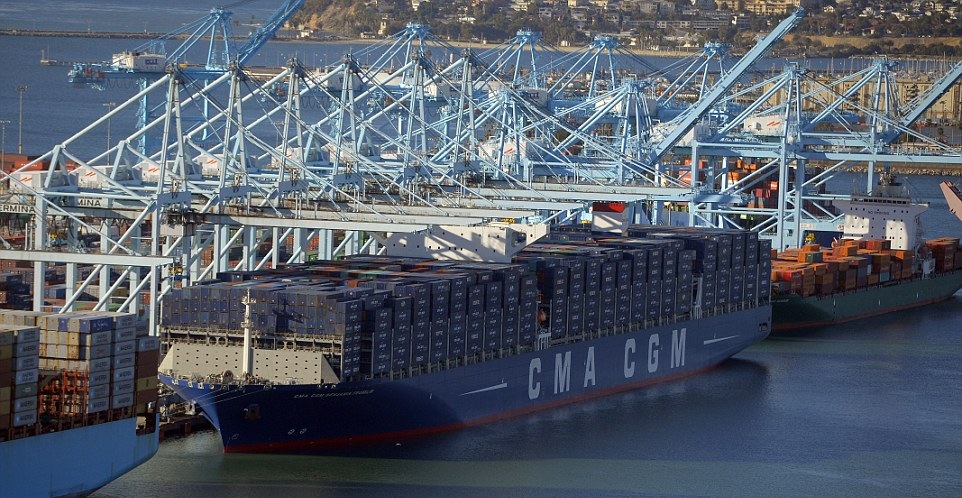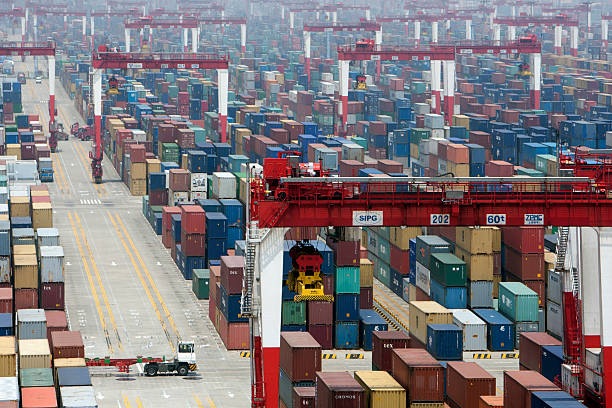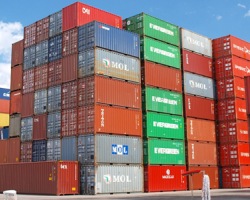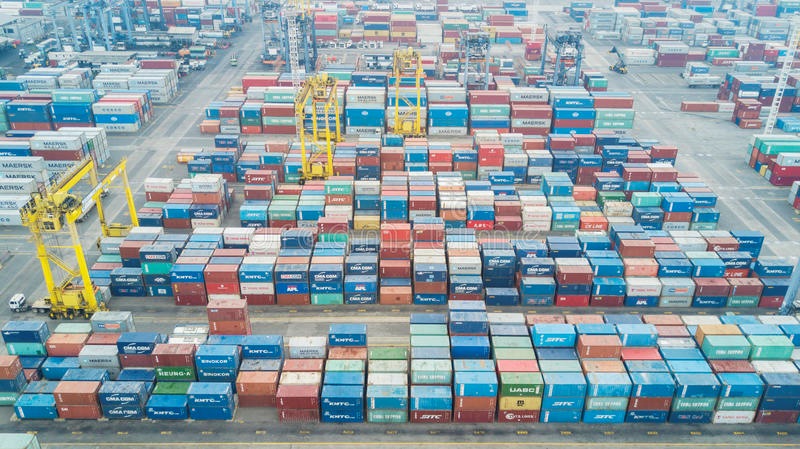|
 Most container terminals (yards), typically found in maritime ports, are constrained in their surface and can only offer the necessary storage capacity by stacking containers ones on top the others, in piles. While this does solve the capacity problem, it creates another one: it happens that a container must be retrieved while other containers are stacked above it in its pile. In that case, in order to retrieve the sought-for container, the ones above it must first be moved elsewhere, yielding unproductive container moves.
Most container terminals (yards), typically found in maritime ports, are constrained in their surface and can only offer the necessary storage capacity by stacking containers ones on top the others, in piles. While this does solve the capacity problem, it creates another one: it happens that a container must be retrieved while other containers are stacked above it in its pile. In that case, in order to retrieve the sought-for container, the ones above it must first be moved elsewhere, yielding unproductive container moves.
|
|
 It turns out that these unproductive container moves are a serious hindrance on the terminal's efficiency. Indeed, some terminals spend nearly half of their container moving time on just getting rid of the containers on top of the ones that actually need to be retrieved!
It turns out that these unproductive container moves are a serious hindrance on the terminal's efficiency. Indeed, some terminals spend nearly half of their container moving time on just getting rid of the containers on top of the ones that actually need to be retrieved!
Yet the unproductive container moves are only due to the fact that the containers were stacked in the wrong places on their arrival: if every container was immediately placed in such a way (on such a pile) that when it needs to be retrieved there is no other container above it, no unproductive moves would take place.
|


 Most container terminals (yards), typically found in maritime ports, are constrained in their surface and can only offer the necessary storage capacity by stacking containers ones on top the others, in piles. While this does solve the capacity problem, it creates another one: it happens that a container must be retrieved while other containers are stacked above it in its pile. In that case, in order to retrieve the sought-for container, the ones above it must first be moved elsewhere, yielding unproductive container moves.
Most container terminals (yards), typically found in maritime ports, are constrained in their surface and can only offer the necessary storage capacity by stacking containers ones on top the others, in piles. While this does solve the capacity problem, it creates another one: it happens that a container must be retrieved while other containers are stacked above it in its pile. In that case, in order to retrieve the sought-for container, the ones above it must first be moved elsewhere, yielding unproductive container moves.
 It turns out that these unproductive container moves are a serious hindrance on the terminal's efficiency. Indeed, some terminals spend nearly half of their container moving time on just getting rid of the containers on top of the ones that actually need to be retrieved!
It turns out that these unproductive container moves are a serious hindrance on the terminal's efficiency. Indeed, some terminals spend nearly half of their container moving time on just getting rid of the containers on top of the ones that actually need to be retrieved! It turns out that deciding at their arrival time where (on which pile) each container should be placed so that at their departure (i.e. retrieval) time they would indeed be on top of their pile is an extremely difficult optimisation problem.
It turns out that deciding at their arrival time where (on which pile) each container should be placed so that at their departure (i.e. retrieval) time they would indeed be on top of their pile is an extremely difficult optimisation problem.